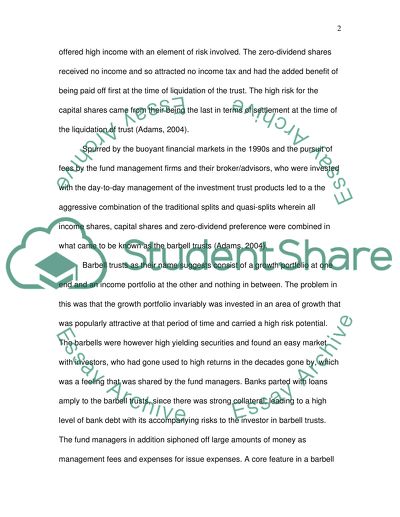Cite this document
(The Split Capital Investment Trust Crisis Assignment, n.d.)
The Split Capital Investment Trust Crisis Assignment. https://studentshare.org/finance-accounting/1559592-the-split-capital-investment-trust-crisis
The Split Capital Investment Trust Crisis Assignment. https://studentshare.org/finance-accounting/1559592-the-split-capital-investment-trust-crisis
(The Split Capital Investment Trust Crisis Assignment)
The Split Capital Investment Trust Crisis Assignment. https://studentshare.org/finance-accounting/1559592-the-split-capital-investment-trust-crisis.
The Split Capital Investment Trust Crisis Assignment. https://studentshare.org/finance-accounting/1559592-the-split-capital-investment-trust-crisis.
“The Split Capital Investment Trust Crisis Assignment”. https://studentshare.org/finance-accounting/1559592-the-split-capital-investment-trust-crisis.


